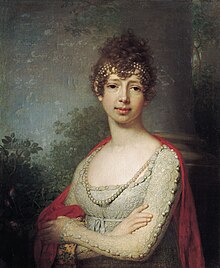
Anna Pavlovna of Russia was Queen of the Netherlands by marriage to King William II of the Netherlands. She was a Russian patriot who upheld a strict royal etiquette in the Netherlands, where she never felt at home, and identified more as an Imperial Russian Grand Duchess than a Dutch Queen. She had no political influence, but was active within charity.

The Order of Saint Andrew the Apostle the First-Called is the highest order conferred by both the Russian Imperial Family and by the Russian Federation . Established as the first and highest order of chivalry of the Russian Tsardom and the Russian Empire in 1698, it was removed from the honours system under the USSR before being re-established as the top Russian civil and military order in 1998.

Saxe-Weimar-Eisenach was a German state, created as a duchy in 1809 by the merger of the Ernestine duchies of Saxe-Weimar and Saxe-Eisenach, which had been in personal union since 1741. It was raised to a grand duchy in 1815 by resolution of the Congress of Vienna. In 1903, it officially changed its name to the Grand Duchy of Saxony, but this name was rarely used. The grand duchy came to an end in the German Revolution of 1918–19 with the other monarchies of the German Empire. It was succeeded by the Free State of Saxe-Weimar-Eisenach, which was merged into the new Free State of Thuringia two years later.
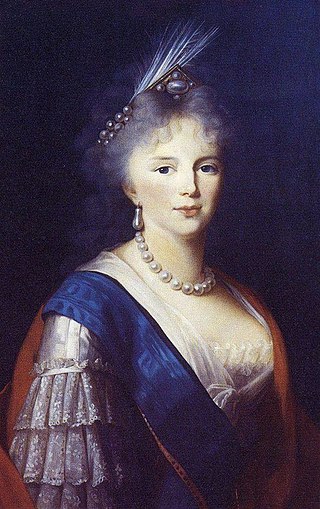
Maria Feodorovna became Empress of Russia as the second wife of Emperor Paul I. She founded the Office of the Institutions of Empress Maria.

Saxe-Weimar was one of the Saxon duchies held by the Ernestine branch of the Wettin dynasty in present-day Thuringia. The chief town and capital was Weimar. The Weimar branch was the most genealogically senior extant branch of the House of Wettin.

Charles Frederick was the reigning Grand Duke of Saxe-Weimar-Eisenach.

Elena Pavlovna was a grand duchess of Russia as the daughter of Paul I, the Russian emperor, and later became the Hereditary Princess of Mecklenburg-Schwerin as the wife of the Hereditary Prince Frederick Louis (1778–1819), who later become Hereditary Grand Duke.

Princess Marie Luise Alexandrina of Saxe-Weimar-Eisenach was a princess of Saxe-Weimar-Eisenach, by birth, and, by marriage, a princess of Prussia. She was the daughter of Charles Frederick, Grand Duke of Saxe-Weimar-Eisenach and Grand Duchess Maria Pavlovna of Russia.

Charles Alexander was the ruler of Saxe-Weimar-Eisenach as its grand duke from 1853 until his death.

Grand Duchess Alexandra Pavlovna of Russia was a daughter of Emperor Paul I of Russia and sister of emperors Alexander I and Nicholas I. She married Archduke Joseph of Austria, Palatine of Hungary. Her marriage was the only Romanov-Habsburg marital alliance to date.

Princess Sophie of the Netherlands was the only daughter and last surviving child of King William II of the Netherlands and of his wife Grand Duchess Anna Pavlovna of Russia. She was heiress presumptive to her niece, Queen Wilhelmina of the Netherlands, for seven years, from the death of her brother until her own death.

Frederick Louis of Mecklenburg-Schwerin was a hereditary prince of the Grand Duchy of Mecklenburg-Schwerin, one of the constituent states of the German Confederation. He was the son of Frederick Francis I, Grand Duke of Mecklenburg-Schwerin, and Princess Louise of Saxe-Gotha-Altenburg.

Princess and Landgravine Louise of Hesse-Darmstadt was a German princess. She was the daughter of Louis IX, Landgrave of Hesse-Darmstadt. On 3 October 1775 she married duke Charles Augustus of Saxe-Weimar-Eisenach and as such a member of the court sphere of Weimar Classicism. She was held to be serious and introverted but also compassionate and sympathetic, in the aftermath of the Battle of Jena which guaranteed her part in the later "myth of Weimar" ("Weimarmythos").

Princess Caroline Louise of Saxe-Weimar-Eisenach was a princess of Mecklenburg-Schwerin by virtue of her marriage. She was the daughter of Charles Augustus, Grand Duke of Saxe-Weimar-Eisenach and his wife Louisa of Hesse-Darmstadt.
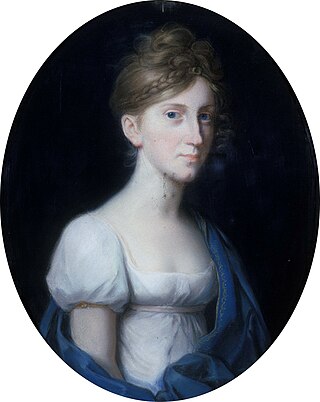
Princess Ida Caroline of Saxe-Meiningen, was a German princess, a member of the House of Wettin, and by marriage Princess of Saxe-Weimar-Eisenach.

Pauline of Württemberg was Queen of Württemberg by marriage to her first cousin King William I of Württemberg.

Princess Pauline of Saxe-Weimar-Eisenach was the wife of Charles Augustus, Hereditary Grand Duke of Saxe-Weimar-Eisenach.
Princess Marie of Saxe-Weimar-Eisenach may refer to:
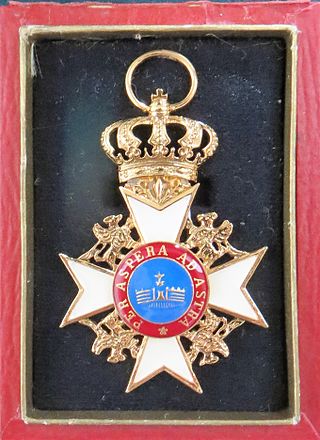
The House Order of the Wendish Crown is a dynastic order that was jointly instituted on 12 May 1864 by Grand Duke Friedrich Franz II of Mecklenburg-Schwerin and Grand Duke Friedrich Wilhelm of Mecklenburg-Strelitz. It is the oldest and most senior order of the House of Mecklenburg.
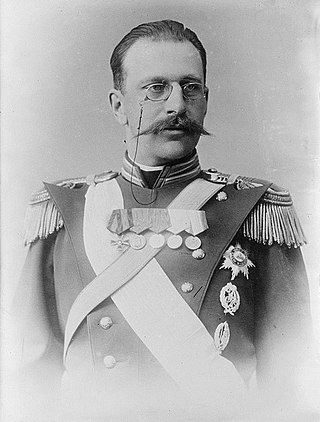
Duke Georg Alexander of Mecklenburg-Strelitz was the eldest of the two surviving sons of Duke Georg August of Mecklenburg-Strelitz and of Grand Duchess Catherine Mikhailovna of Russia. He was a great-grandson of Emperor Paul and a cousin of Emperor Alexander III of Russia. Although he was a German prince of the House of Mecklenburg-Strelitz, he was raised in Imperial Russia, where he lived all his life.
